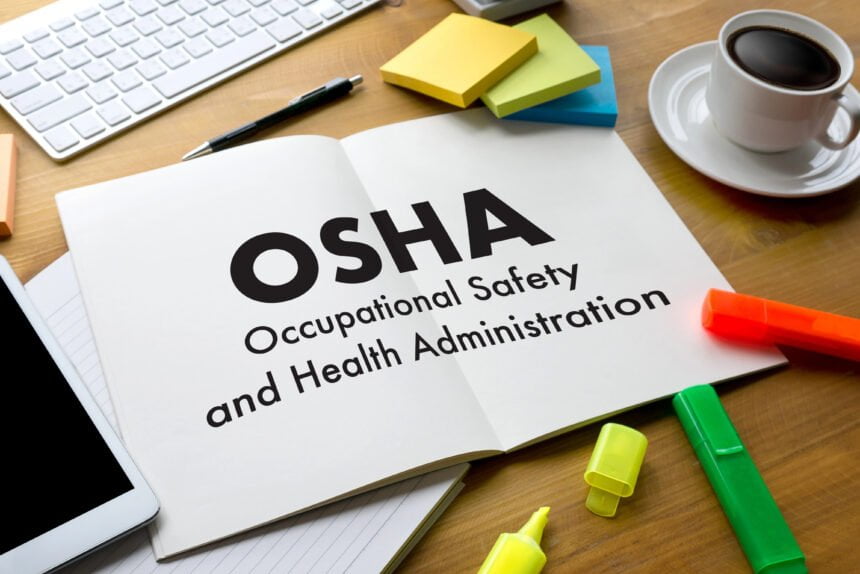Many companies started to focus a lot more on workplace health and safety around the time of the pandemic. Businesses that didn’t prioritize the health of their employees had a lot more trouble keeping them, which led to major staffing shortage and high turnover in some companies.
There are a lot of things that you need to do if you want to keep your workplace healthy. The good news is that it is easy if you are willing to follow OSHA rules.
OSHA Rules Are Vital for Promoting a Healthy Workplace
Imagine this: you’re at work, just another regular day, when suddenly, an accident happens. A coworker gets injured, and everything changes in an instant.
Unfortunately, this scenario is far too common.
In fact, in 2022, 2.8 million workers suffered non-fatal work-related injuries or illnesses in the United States.
So, what measures are taken to reduce the number of such incidents? How can you improve employee safety?
That’s where OSHA (Occupational Safety and Health Administration) comes in, highlighting the critical importance of workplace safety.
Let’s explore what OSHA is, how it helps with workplace injury prevention, and some future trends in maintaining a safe work environment.
OSHA: Definition, Mission, and Objectives
So, what exactly is OSHA?
Established in 1970, the Occupational Safety and Health Administration is a regulatory agency that ensures safe and healthy working conditions for American workers.
OSHA’s mission is straightforward: to prevent workplace injuries, illnesses, and fatalities. It does that by:
- Developing safety standards that reduce or eliminate fall hazards, equipment-related risks, and chemical exposure
- Conducting inspections to ensure compliance
- Offering training programs to educate both employers and employees on best practices
- H3: OSHA Standards and Regulations
OSHA’s safety standards are the backbone of its efforts to protect workers. These standards cover a wide range of workplace hazards, from chemical exposures to mechanical dangers. There are general industry standards that apply to all workplaces, as well as specific standards tailored to industries like construction, maritime, and agriculture.
But how are these standards developed?
OSHA relies on scientific research, expert input, and stakeholder feedback to craft regulations that are both effective and feasible. For example, in the construction industry, OSHA’s regulations on fall protection have significantly reduced the number of injuries and fatalities related to falls.
Case Study: DuPont’s Safety Success
In the early 2000s, DuPont implemented comprehensive safety measures, including rigorous machine guarding and extensive employee training, aligning closely with OSHA standards.
This initiative led to a significant drop in machinery-related injuries, and in 2019, 73% of their sites achieved zero injuries and illnesses.
OSHA’s Enforcement Mechanisms
Now, you might be wondering how OSHA ensures these standards are followed. This is where their enforcement powers come into play.
OSHA conducts inspections and investigations to identify hazards and ensure compliance. These inspections can be triggered by reports of workplace incidents, complaints from workers, or random selection.
On the other hand, non-compliance with OSHA standards can result in significant penalties. Employers found violating safety regulations may face fines, and in severe cases, legal action. This serves as a strong deterrent, encouraging employers to prioritize safety.
Additionally, studies have shown that workplaces subject to regular OSHA inspections experience 9.4% fewer injuries and fatalities compared to those that are not. In turn, this also leads to an average of $350,000 reduction in medical expenses and lost salaries per company.
The Role of Employers and Employees
Ensuring workplace safety is a collaborative effort between employers and employees. Under OSHA regulations, employers are responsible for providing a safe workplace. This includes conducting regular hazard assessments, maintaining safety equipment, and providing training on safe work practices.
Employees, on the other hand, have the right to a safe workplace and the responsibility to follow safety protocols. They should report hazards, participate in training, and use the safety equipment provided. OSHA encourages employees to speak up about unsafe conditions without fear of retaliation, fostering an environment where safety is everyone’s priority.
Workplace Safety with OSHA: Future Trends and Challenges
As technology advances, so does the landscape of workplace safety.
OSHA is adapting to these changes by updating standards and exploring new ways to integrate technology into their safety protocols.
H3: Technological Innovations
- Wearable safety devices: Smart helmets and vests equipped with sensors can monitor a worker’s vital signs and detect environmental hazards like gas leaks or extreme temperatures in real-time. These devices can also alert workers and supervisors to potential dangers before they escalate into serious incidents. For example, wearable devices can detect fatigue in workers and alert them to take a break, preventing accidents caused by tiredness.
- AI-driven hazard detection: AI systems can analyze vast amounts of data from workplace sensors, cameras, and other sources to detect patterns that indicate potential safety risks. For instance, AI can analyze video feeds to identify when workers are not wearing proper safety gear or are in dangerous positions, automatically alerting supervisors to intervene.
- Virtual reality training: VR provides immersive training environments where employees can experience simulated high-risk scenarios without any real danger. This type of training can improve preparedness and response times in actual emergencies. For example, VR can be used to train construction workers in how to operate heavy machinery safely or how to respond to hazardous spills.
The Evolving Employment Landscape and Workforce Diversity
The gig economy and the increasing diversity of the workforce present new challenges for workplace safety.
For example, gig workers often lack traditional employment benefits and may not receive adequate safety training or equipment.
OSHA is exploring ways to extend its standards and ensure that gig workers in industries like ridesharing and delivery services receive proper training on things like road safety and vehicle maintenance.
Additionally, as workplaces become more diverse, safety training and protocols must be inclusive and accessible to all workers, regardless of language barriers or cultural differences.
That’s why to ensure that safety communications are easily understood by all employees, OSHA provides resources and training in multiple languages.
Strengthening Partnerships and Collaboration
Creating strong partnerships with industry leaders, labor organizations, and academic institutions can drive the development of more effective safety solutions. For example, OSHA collaborates with NIOSH (the National Institute for Occupational Safety and Health) to conduct research and develop guidelines on emerging safety issues.
Moreover, engaging with employers and employees through outreach programs (like OSHA’s Voluntary Protection Programs) and safety consultations can empower all stakeholders to ensure workplace safety.
Final Thoughts
Through setting and enforcing safety standards and fostering a collaborative approach to safety, OSHA helps create safer work environments across the nation.
As an employer, staying informed about OSHA regulations and actively engaging in safety practices can help you stay compliant and ensure your workers are always safe. For employees, understanding your rights and responsibilities under OSHA can help ensure your safety and well-being at work.
Remember, workplace safety is a shared responsibility. By working together, we can build a safer, healthier future for everyone. So, let’s make a commitment to prioritize safety in our workplaces, ensuring that every worker can go home safely at the end of the day.








